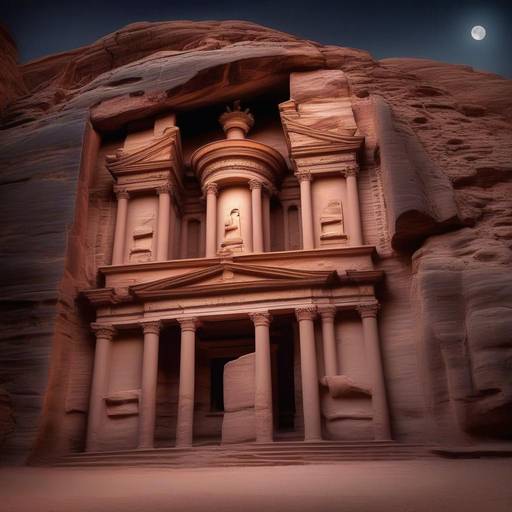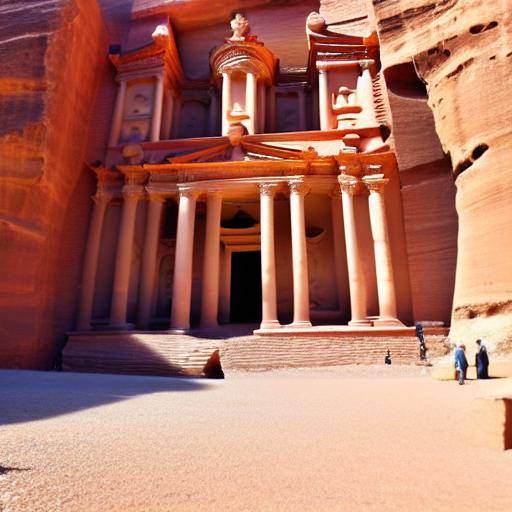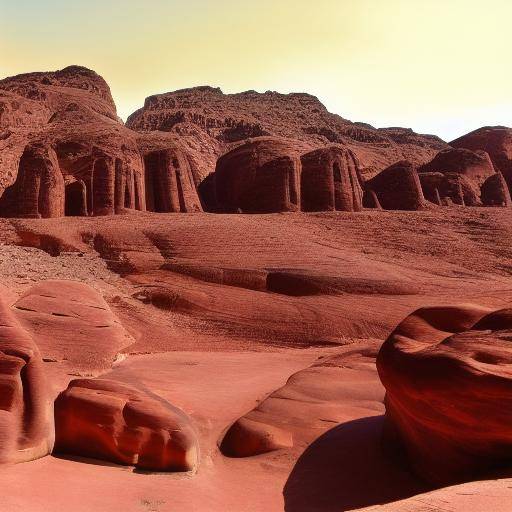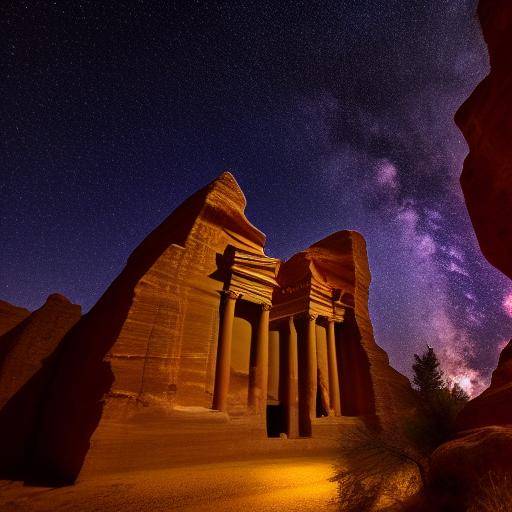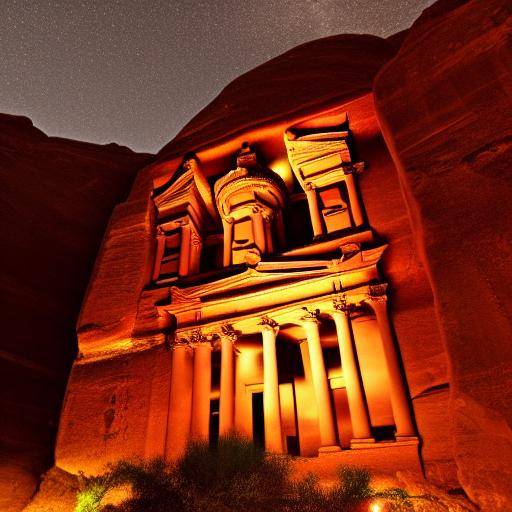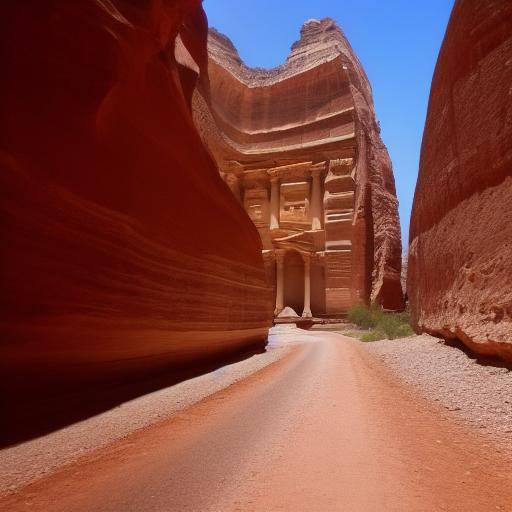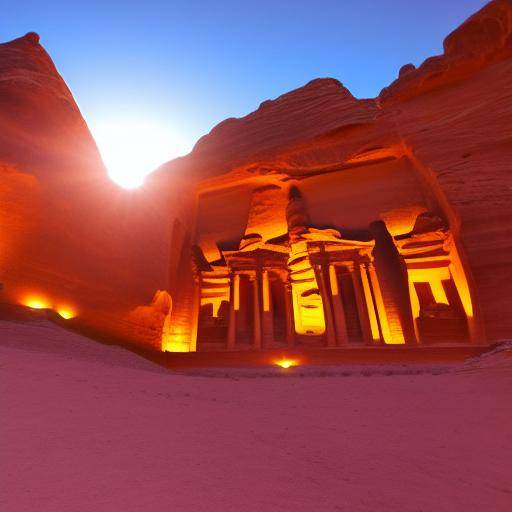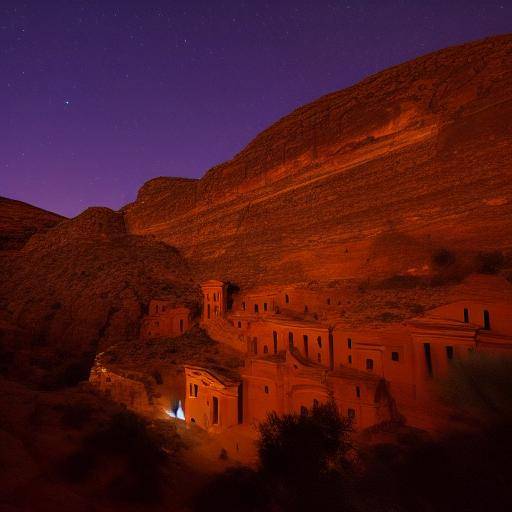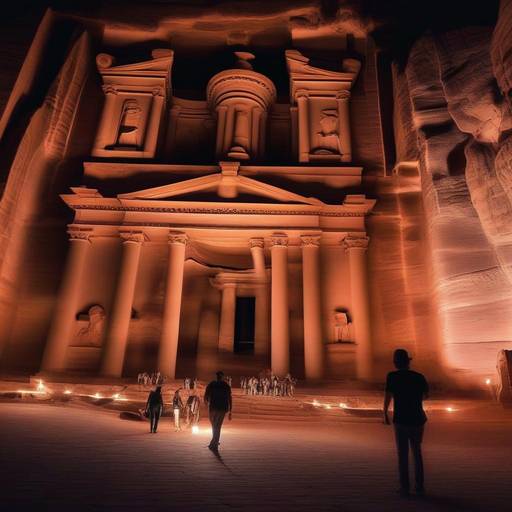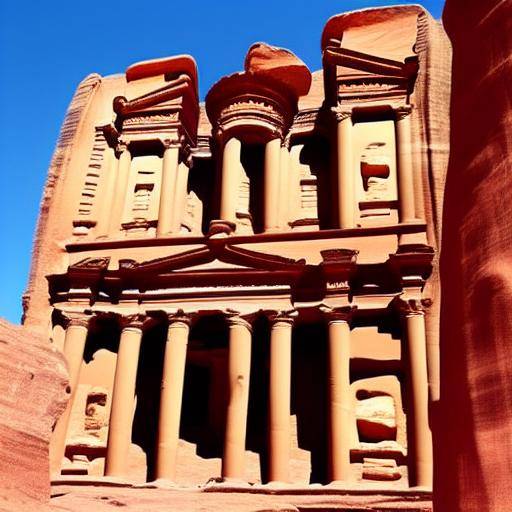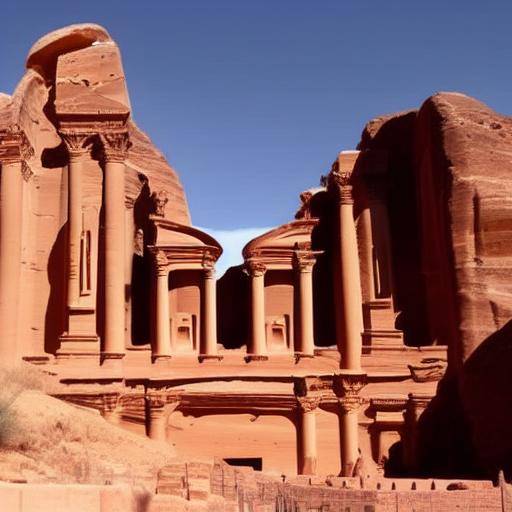
In the region of Ma'an, Jordan, there is one of the most impressive archaeological wonders in the world: Petra, known as the "rose city" for the color of its majestic rocks. This ancient city, carved in cliffs of pink stone, is a testimony of human ingenuity and a jewel of historical heritage. In this guide, we will thoroughly explore Petra, its historical legacy, its importance as a tourist destination and offer practical advice for those who wish to explore this ancient wonder.
Introduction to Petra: Pink City of Jordan
Known as the capital of the ancient Nabatean Kingdom, Petra is famous for its impressive architectural treasures, its intrinsing history and its intricate fusion between classic and eastern architecture. Since its rediscovery in the nineteenth century, this city has captivated travelers, archaeologists and history lovers with its unique beauty, making it a must for any cultural tourism enthusiast.
History and Background of Petra
Origins and Historical Significance
Petra has its origins in the Iron Age, although it reached its peak during the apogee of the Nabatean Kingdom between the 4th century BC and the 1st century AD. The ability of the Nabateans to carve stunning rock structures and create a thriving shopping center made it an important enclave on the ancient Silk Road.
Key Developments and Reflection Points
Throughout his history, Petra experienced several significant changes, from hellenistic influence to eventual annexation by the Roman Empire. The earthquakes and economic decline led to the decline and eventual abandonment of the city, before being rediscovered by the Swiss explorer Johann Ludwig Burckhardt in 1812.
Petra Deep Analysis
The historical and archaeological importance of Petra as a shopping and religious centre offers a fascinating look at ancient life in the desert. The intricate water systems, the royal tombs and the temples carved in the rock reflect the artistic ability and architectural vision of the Nebateans, which enriches our understanding of the past.
Petra Exploration: Tourist Destination
Benefits and Challenges of Tourism in Petra
The growing tourist interest in Petra has generated economic benefits for the region, but it also poses challenges in preserving the site and managing sustainable tourism. Balance conservation with accessibility for visitors is a key challenge that requires careful planning and management.
Practical Tips for Exploration
When visiting Petra, it is important to be prepared to explore the extensive site, which includes Siq, the Treasure, the Monastery, among other fascinating places. It is recommended to wear comfortable shoes, water, sunscreen and a camera to capture every detail of this ancient wonder.
Comparison of Petra, Jordan and Tourism in Jordan
The beauty and historical importance of Petra make Jordan a must for lovers of history and archaeology. In addition, tourism in Jordan offers a rich variety of experiences, ranging from the Roman ruins of Jerash to the Dead Sea, attracting travelers from around the world.
Conclusion " FAQs
In conclusion, Petra is much more than a simple ancient city; it is a living testimony of human ingenuity, creativity and adaptive capacity. By exploring Petra, visitors not only have the opportunity to marvel at the greatness of the past, but also to appreciate its lasting legacy.
Frequently asked questions
- **What is the best time of the year to visit Petra?**Spring and autumn are usually the most recommended seasons, as the weather is more moderate, which facilitates the exploration of the site.
- **How long do you need to explore Petra completely?**It is recommended to spend at least two days to explore Petra in its entirety, allowing you to enjoy all the highlights and absorb the historical wealth of the place.
- **Are there restrictions to visit Petra?**Currently, there are no special restrictions to visit Petra, but it is important to respect the rules of conservation and preservation of the site, as well as the indications of the local authorities.
- **What are the preservation measures implemented in Petra?**The Jordanian authorities have implemented measures to preserve Petra, such as restricting access to certain fragile areas, promoting sustainable tourism and working with international organizations.
- **Are hiking activities allowed in Petra?**Yes, hiking is a popular activity in Petra, especially to explore less well-known areas and enjoy stunning panoramic views.
- **Are there guided tours available in Petra?**Yes, guided tours are offered in both Petra and its surroundings, allowing visitors to get a more complete perspective on the history and architecture of the place.
We hope this guide has awakened your interest in exploring Petra and its historic treasures!
In short, Petra is much more than a simple ancient city; it is a living testimony of human ingenuity, creativity and adaptive capacity. By exploring Petra, visitors not only have the opportunity to marvel at the greatness of the past, but also to appreciate its lasting legacy. With its profound history and impressive architecture, Petra continues to leave an indelible mark on those who have the privilege of visiting it.
Including valuable information about Petra, its historical importance and its relevance as a tourist destination, this guide offers an integral vision that will surely inspire many to embark on a fascinating adventure in Jordan's "rose city".

